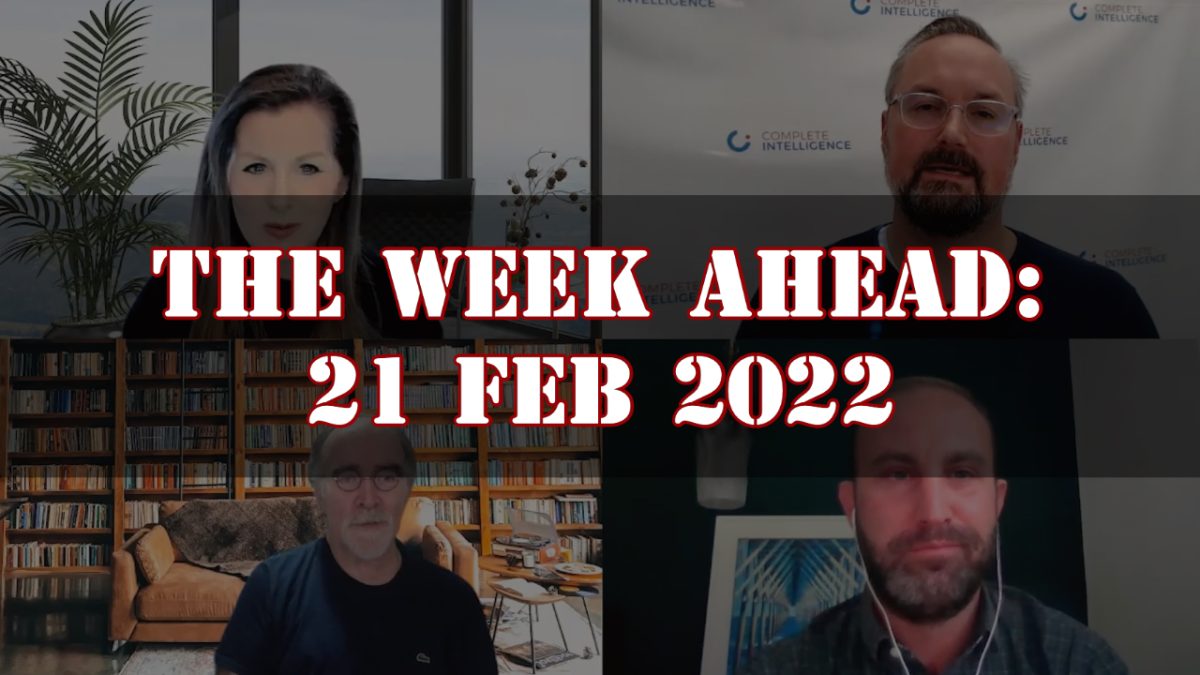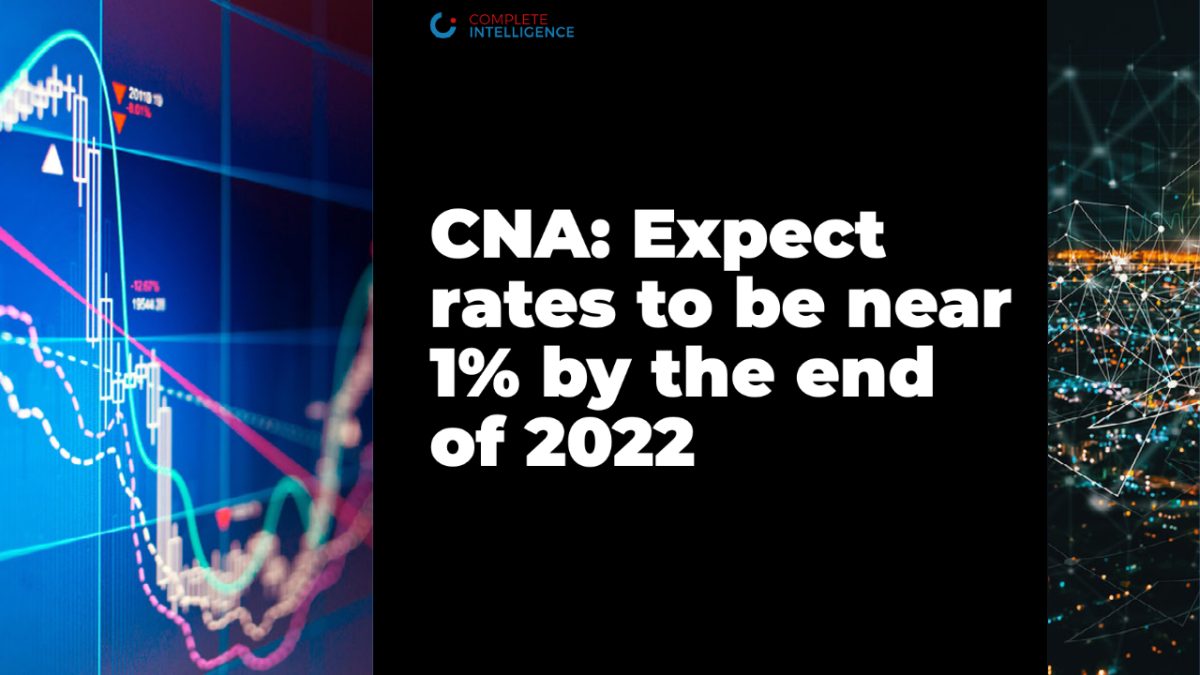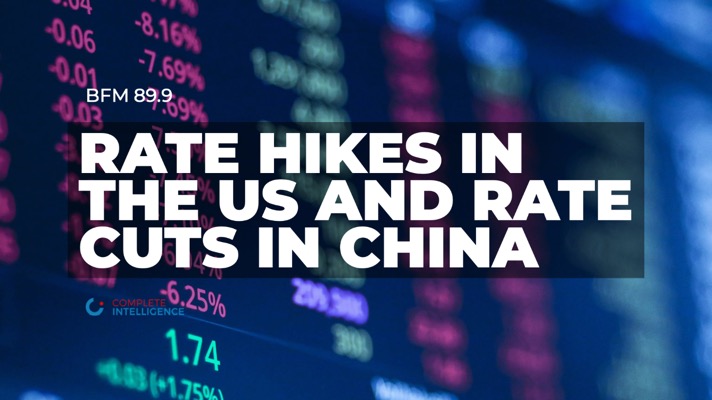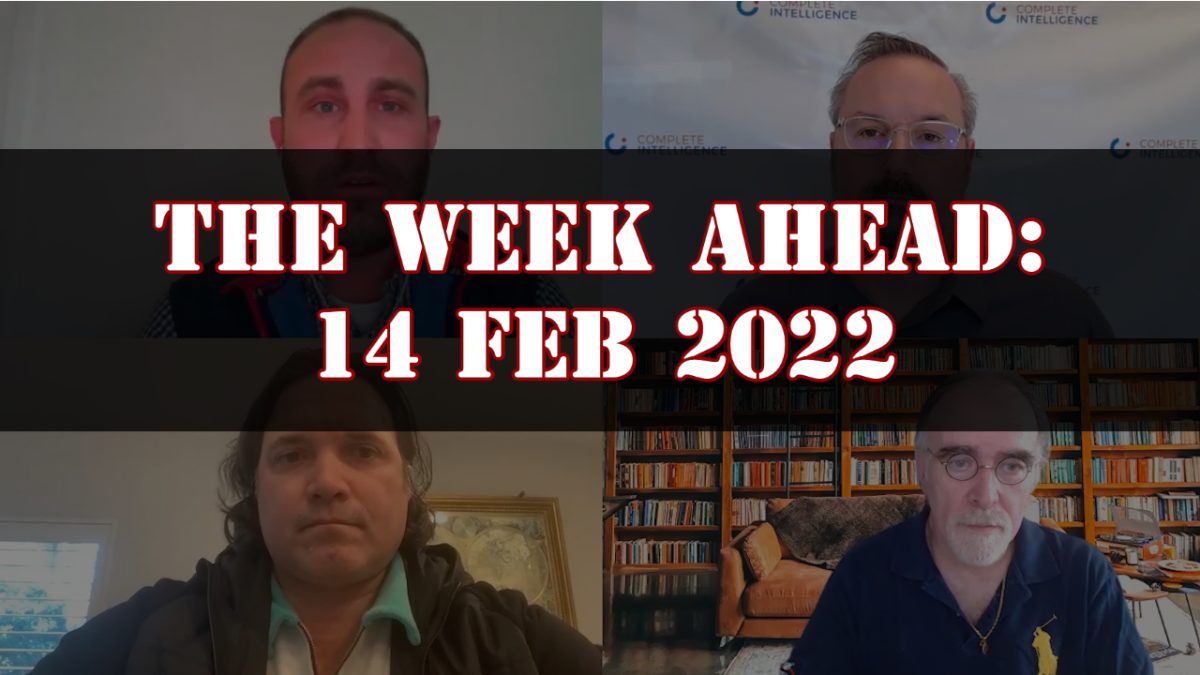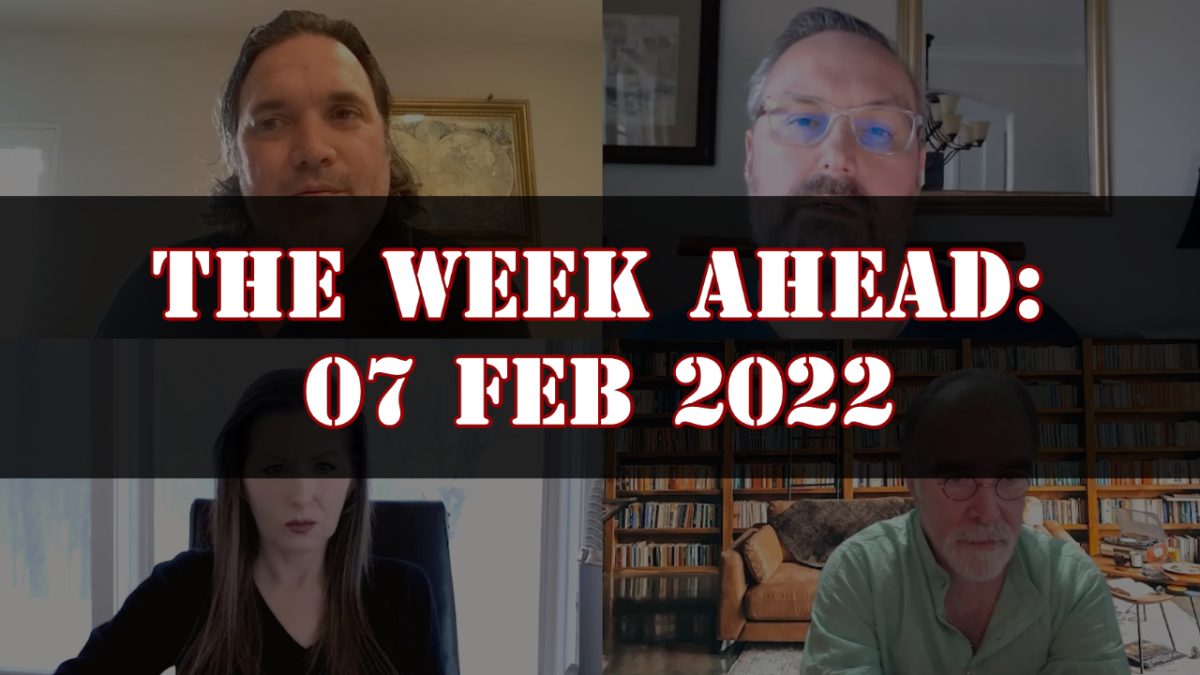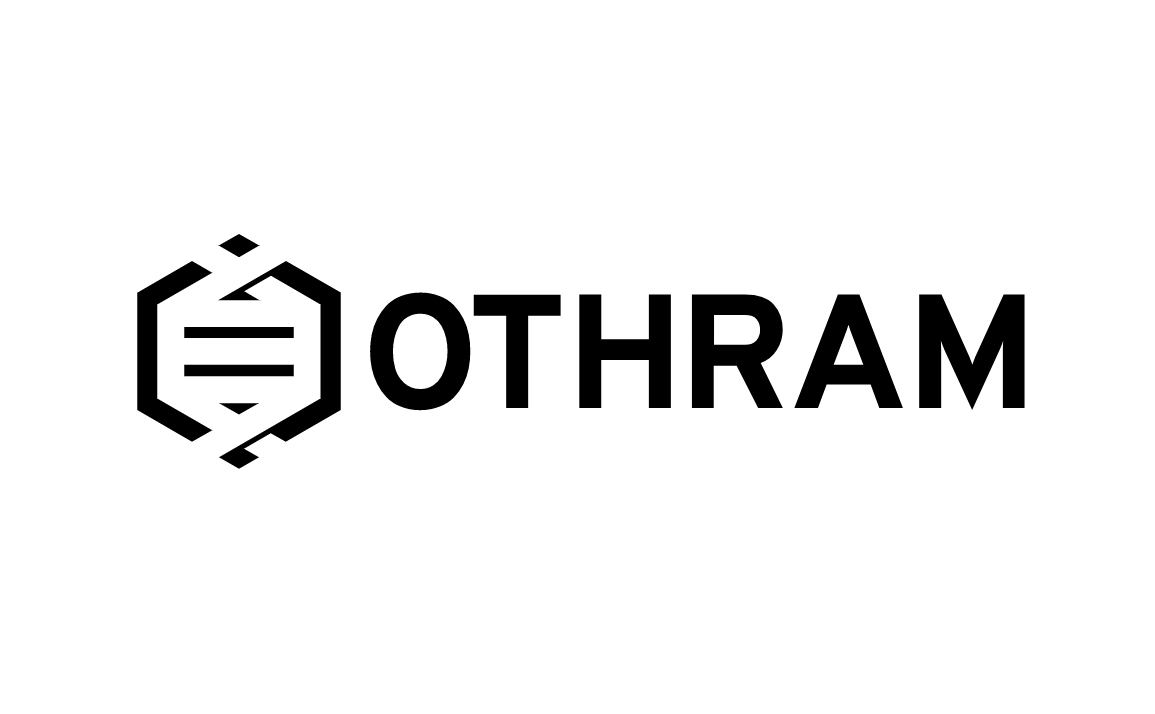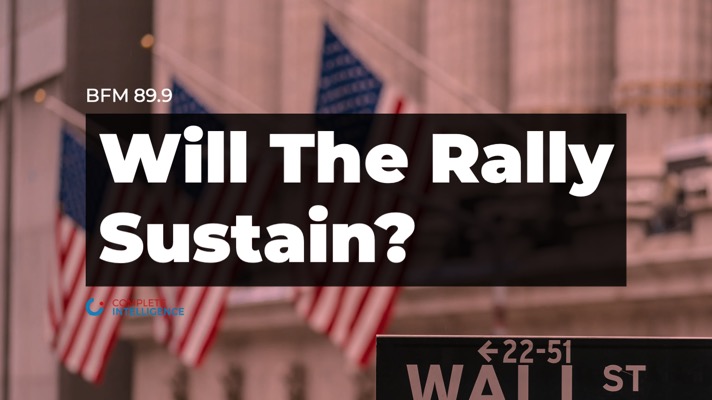Last week’s big news is Ukraine and Russia. So in this episode, we want to talk you through some context and what this means for markets in the near term. First, the guys talked about the most surprising thing that happened and then we moved on to answer a few viewer questions like what’s the implication of Russia being disconnected from SWIFT? Will anything change between Europe and China? Will the Russia-Ukraine inspire China to actually invade Taiwan? How disrupted the energy markets will be? And finally, what happens to the world economy – Fed, QE, QT, consumers, etc.?
Listen to this episode on Spotify
Follow The Week Ahead experts on Twitter:
Tony: https://twitter.com/TonyNashNerd
Sam: https://twitter.com/SamuelRines
Albert: https://twitter.com/amlivemon
Tracy: https://twitter.com/chigrl
Transcript
TN: Hello. Welcome to The Week Ahead. I’m Tony Nash. And I’m joined by Tracy Shuchart, Albert Marko, and Sam Rines. Before we get started, I’d like to ask you to subscribe to our YouTube channel. And like this video. It helps us with visibility and you get reminded when a new episode is out. So thanks for doing that right now.
We had a lot on this week, especially around Ukraine. So today we’re really focused on Ukraine. We want you to understand the context around Ukraine. We want you to understand what it means for markets. And we’re going to take a lot of your questions that we’ve been gathering off of Twitter.
So just a quick recap of what we said last week. Coming out of last week’s episode, we said it’s not a time to make big decisions. We said to keep risk tight and be careful of volatility. And we said that crude markets would move sideways. So we did kind of come into this assuming risk would be there this week. And obviously, we saw that.
So first, guys, can you walk us through some of your observations of the past week? What are you seeing directly in and around Ukraine or Ukraine, and how is that affecting markets? And as each one of you talk, Albert, I want to start with you, but name something that surprised you most in the past week in markets. Okay. Can you give us a quick overview? I know you’ve got deep networks in that region. So can you talk to us a little bit about what you’re hearing and seeing there?
AM: Well, I mean, concerning Ukraine and the markets. What I was most surprised and a little bit taken aback by was the amount of mainstream media just decorations of World War Three and whatnot then how much it affected the markets? So much so that you have to look at the markets and say what is going on?
Because this is just not normal behavior for markets to respond to a situation in the Ukraine that’s really kind of not really attached to the United States market at the moment. I mean, it isn’t commodities and that’s something Tracy will get into. But it was an overabundance of bad news, just an overdrive. And that’s what actually really took me aback.
TN: Good opportunities out there.
AM: There is absolutely good opportunities. But the problem is the volatility goes way up higher. The VIX exploded. You can’t get into options because they’re just far too expensive. You’re going to get burned doing that. And what do you do? Maybe sitting on your hands is the proper thing to do until things stabilize. But yes, there were actually great opportunities.
TN: What are you hearing on the ground, Albert? I know you’re really close to that part of the world. So what are you hearing on the ground?
AM: Well, the situation is really fluid and really tense at the moment. I think the Russians were taken aback. I know that the Russians were taken aback about the actual veracity of defense by the Ukrainians. Their main objective is to take Mariupol and then take Odessa. That is their number one and number two objective. Their next objective is to take not really to take you because I don’t think they can actually do it unless they want to do some kind of redo of the Chech and guerrilla warfare and just start massacring people. They’re not in that business at the moment. The world’s eyes are on it.
So I think political change, maybe snap elections is what they’re probably going for in Kiev just to surround it, stress the city, stress the residents, force a change where Western governments can’t get a bigger say in the matter on a nation that’s right on the doorstep.
TN: Okay, so I’m seeing on say on social media like TikTok videos of burned out Russian tanks and all these things, and I think it seems to me that Russia is losing the PR war right now and that’s really important in the early days and with different demographics even within Russia. Do you think Russia or Putin kind of underappreciated the impact that social media would have, at least on the early days of this?
AM: Of course, Russia has a vast network globally of PR campaigns in the west. So for him, it’s definitely a concern where you have negative images of Russia, Russia’s military trying to enact power projection. It’s a little bit daunting for him at the moment.
However, from a military strategic point of view, we don’t know exactly what their exact strategy is. Whereas they’re just trying to expand Ukrainian defenses, trying to get the best of their defenses out already. So they have a shortage of supply later on. That’s what most professionals would say is happening.
So we really have to see over the weekend to see what kind of resources have been expended by the Russians trying to take back Mariupol and Odessa.
TN: Do you think the Ukrainians can get stuff resupplied? Do you think they would have any difficulty getting stuff resupplied from the west?
AM: It’s totally up to the west and what they’re going to supply them and how they’re going to supply them. I’m sure that the west have Special Forces sprinkled without inside of Kiev assisting as advisers to the defense forces there. So it just depends on the will of the Europeans at the moment.
TN: Okay, Sam, what have you seen this week in markets that’s kind of gotten your attention or surprise you?
SR: I would say what really caught my attention were two things. One, how quickly Wheat went up and how far it went up and then how quickly Wheat went down and how far it went down.
There were two days where Wheat was just skyrocketing. I think it was 5.5% day followed by negative. I forget where it closed, but a significant negative day in the six to range at a minimum. That really caught my attention.
Ukraine is incredibly important on the wheat front. That’s a pretty important one. And then I would say how quickly and how far gold went. Right. Gold was almost $2,000, and now it’s below where it was prior to the invasion, and it did that all in a day. I mean, that was an incredible move in my book and somewhat shocking. And I think it was kind of interesting when people caught on that if you cut off Russia from being able to really sell, call it dollars, Euros, et cetera, on the market openly, it’s going to potentially have to sell gold if this thing drags out.
So you have an overhang of gold in a war scenario. Not necessarily, I call it a tailwind. I thought that was a really interesting call it knee jerk reaction up in gold, and then kind of a realization of, oh, crap, this might not be the thing to own here.
And then the final thing and I’ll make this one quick is crypto and how war was supposed to be great for crypto. And as the war started, you saw crypto sell off pretty hard. I think it’s interesting on two fronts. One, there’s a significant amount of crypto activity in Ukraine and Russia.
Russia is the second largest country when it comes to providing hash rate to the market for Bitcoin. And if there’s any sort of disruption there, all of a sudden the US could become 50% of the hash rate awfully quickly, which could become an interesting scenario there.
TN: How does the hash rate for people who aren’t crypto experts? How does the hash rate equate to say, the crypto price?
SR: It makes it, call it’s basically an efficiency mechanism where you can either do transactions more quickly, more efficiently, and somewhat of a lower cost. That’s basically what you do.
So if you lower the hash rate, you increase the cost of doing transactions and slow the general system down.
TN: Okay, great.
AM: This is interesting, Tony, because this actually leads into a lot of my arguments against crypto being decentralized, saying, hey, when push comes to shove, governments have control of the networks and the financial system. You can’t get away from that.
TN: Yeah. And if you cut off the electricity supply, it becomes even more difficult.
AM: Nearly impossible. Puerto Rico.
TS: And if you’re Russia that has control of the entire Internet, you can cut off whatever sites that you want. Right?
TN: Right.
SR: Yeah, that’s right. Yeah. It was interesting. There was something floating around yesterday where it appeared that Russia was at least partially geofencing their country from the rest of the world. And if it does that, that could become problematic if it does it in a meaningful way for crypto.
TN: Sure. And taking down the RT site doesn’t help their paranoia there. Right. Tracy, what happened for you over the week? What’s one of your observations that really kind of surprised you?
TS: Well, I mean, to be honest, because I’m focused on the commodity side of everything, pretty much how I saw the markets going or how I pretty much thought how the markets were going to go. Right. I posted a bunch of stuff on Twitter.
TN: You saw all this coming?
TS: No. Well, I didn’t do this. I don’t want to sound like arrogant. I focus on energy, metals, materials, agriculture. And because Ukraine and Russia are such large hubs for all of these commodities, wasn’t really surprising to me that we saw a jump in all of these.
TN: Yeah. Were you surprised the magnitude of the jump?
TS: Yes. And in some respects, I actually expected Palladium to have a bigger jump than it did because Rush is 43% of that global markets and wheat went far beyond bonkers that I thought it was going to go.
Was I surprised about oil? No. On the upside and on the downside today.
TN: Great. Okay, very good. Let’s jump into some of these viewer questions. You guys know that we saw a lot of viewer questions at the start of this.
So the first one I’m going to read out is from Keith Snyder. It’s @snyderkr0822. He says, what would the implications be of disconnecting Russia from SWIFT?
I’ve inspired your knowledge and have to be informed. So there’s been a lot of talk about SWIFT over the past few days. Sam, do you have some insight there on what would happen if Russia was taken out of the SWIFT network?
SR: It would be less bad than it would have been call it three years ago. Russia has somewhat insulated themselves from SWIFT, but not entirely by no means. Right. The SWIFT system can cut you off from dollar denominated, at least dollar denominated transactions.
That’s a pretty important thing, particularly when you’re selling a lot of things that are denominated in dollars. Right. Oil, et cetera. That becomes somewhat problematic. I would say that would be a very significant hit to Russia.
And it would also be a significant hit. And by significant hit, I mean that’s putting you on par with Iran and Cuba. Right. That’s basically putting you at Code E country without saying it. That’s Iran, your Cuba, see you later, bye.
I think that what I would be paying very close attention to is the reaction of European banks. That’s $330 billion worth of Russian liabilities assets on their books. So you’ve got to figure something out there pretty quickly because those books are going to get smacked if you can’t actually get on the SWIFT system.
TN: Okay. And Tracy, if they were taken off a SWIFT on Friday, Germany said that they would be okay with imposing that sanction, how would Germany pay for its electricity?
TS: I mean, Germany said that with a caveat, let’s say, because they did say we’re going to look at this, but we need to look at the implications of this. So obviously the problem there in lies that if you take a Rush off SWIFT, then Europe is screwed energy wise. Right? Unless they choose to scramble and make long term contracts with, say, the United States.
They could go through the United States. They could go through Azerbaijan on the Tap pipeline. They could go through Israel and Egypt if they wanted to, through the Southern gas quarter. I mean, there are options for them.
The problem is that they should have been looking at long term contracts this summer when we already knew that Nordstream Two was going to be delayed.
TN: Four, three, four years ago. I mean, they’ve had this optionality on the table for a long time.
TS: But those options are still on the table for them. But by delaying SWIFT, if you cut Rush off SWIFT, the big problem Europe has to decide is do we cut off SWIFT and hurt ourselves or do we hurt Russia more? And I could argue that both ways. Anybody could argue that both ways. But that’s a big decision that they have to make.
TN: Well, everybody hurts, right? That would not be a sanction that would be pain free for anybody.
TS: Right. Except maybe the US.
AM: Well, Tony, despite the rogue status of Russia, it’s still well attached to the Western financial system. It’s not seen as able or even as aggressive as the Chinese are and detach it from the financial system.
There would be a lot of problems if they were banned from SWIFT. But it’s certainly a valid deterrent if the west wants to actually use it. They keep a lot of their bank and central bank money in the Euro dollar market. So no SWIFT would mean no more Treasuries, but they’d just move into the Euro dollars itself.
Maybe that’s why they were buying gold because of this tension that they saw coming. It’s a risk to their global market.
TN: Sure. Okay, let’s move to China now. We’ve got a few questions on China. We’ve got one from @NathanDallon. He says, does anything in Europe change the situation with China?
There’s another one from Ritesh @chorSipahi, he says question for Samuel Rines and Albert, Ritesh. I’m not taking offense at this. What is the deterrence for China not to invade Taiwan or now to invade Taiwan?
And then we’ve got another one from Rich @rm_ua09. How could China benefit the most out of the Russia Ukraine situation? A, supporting Ukraine in some manner, B, remaining neutral, or C, taking measures to whether Putin.
So there’s a broad spectrum of questions there, guys.
TS: Take the first one, I think, Tony.
TN: Okay, let’s go for it. What happens in Europe?
AM: Well, Europe. I think that the Europeans are going to be actually more dependent on China trade after this because they’re seeing a problem with the Russians politically.
You can’t sit there and tell me that they’re going to be able to support the Russians like they were in trade, whether it’s commodities or whatnot on steel. I mean, name your commodity. Name your.
TN: Chinese already own like 70% of the global steel market. So is it going to make that much of a difference?
AM: It’s, well, I mean, they still diversify. They’re still going to have to play ball in the global trade. So I think at this point, politically, Russia’s poisonous, and then you’re going to have to steer even more towards China.
TN: Right. So, yeah, it seems to me that China could actually use this as an opportunity to distance itself from Russia. Right. If it goes bad, China is very silent right now. And if it goes bad, they could distance themselves from Russia and make some really tight allies in Europe at Russia’s expense. Does that make sense to you guys?
AM: It does to me.
SR: 100%. I think that would be the spare play from China in a lot of ways, because you get two things. You’re going to get tighter ties to Europe, which diversifies you somewhat away from the US even more. It gives you call it a barrier to the United States and whatever the US wants to do, and it also, to a certain extent, raises your profile on the international stage. Right.
TN: That’s key. China really wants to be seen as a credible diplomatic player and I think there’s still a bit of a chip on their shoulder about not being seen as an equal with a lot of the larger Western Nations. So I think your last point is really important.
There seems to be a view that Russia invading Ukraine somehow enables China to invade Taiwan. What are your thoughts on that?
AM: I absolutely disagree with that wholeheartedly. I think the two situations are nothing alike at the moment. I mean, Ukraine is in Russia’s eyes, it’s own territory. Same as is China views Taiwan.
However, Taiwan has a much more active defense military force and more of a backing from not only the US, but Australia, Japan, India. That’s a problem for the Chinese, too. So I think the two. I don’t like to draw a comparison between the two. I don’t think there is anything related to it.
TN: Sam?
SR: I have almost nothing to add beyond that. And I think the one country that’s really interesting in there is India, because India did not step up on the Ukrainian front and India would step up on the Taiwan front.
AM: Yeah. And on top of that, on top of that, let’s just be realistic here. We know that the Chinese probably have military observers inside of Ukraine watching and taking notes.
TN: Sure. How to conduct right now. If you’re a Chinese PLA officer and you’re looking at what’s happening in Russia versus what the United States did in Iraq, what would be your assessment? Russia gives us nothing against the United States.
The United States is a juggernaut. That’s what I think nobody’s even talking about.
TN: Yeah. If Russia didn’t just roll into Ukraine and take it over in 24 hours, what kind of model are they for China?
AM: And that’s on their border, Tony, that’s on their border.
TN: Exactly. No, exactly. So logistically, Russia’s logistic supply chain for their military, it seems like it’s pretty horrific. Their intelligence, like everything. It just seems like a mishmash of let’s just go get them.
AM: They are a professional military force. They have budget problems. That’s what. If they really wanted to go into Ukraine and just smash the place, they could. But the problem is you’d have to kill many civilians in the meantime, which they can’t do that.
So the Chinese are sitting there probably looking at like, what do we do here? Who is this military partner that we’re actually partnering up against the United States? It’s not sufficient.
TN: Yeah. It seems to me that on some level, going back to the social media comment I made, Russia is kind of embarrassing itself. China doesn’t want to be seen allied with someone who’s embarrassing themselves. Right. They’re happy to.
TS: That’s why they’ve been so quiet. They haven’t said nothing.
TN: Yes. And I think China is always looking also looking at how unified is the world’s response against Ukraine. Right. So if they were to go after Taiwan, how unified would the response be?
So going back to what I said earlier, I think China has a real opportunity here to distance itself from Russia, to play nice on Taiwan and really benefit from trade and finance and diplomatic relationships.
AM: 100%.
TN: Tracy, do you have anything else on that on China? Any other thoughts?
TS: No. I think you guys…
TN: Awesome. Okay, very good. Let’s go to the next ones. Okay. Tracy, these are all energy related. So primarily, if we look at this @DaveRubin15, he says, what are the energy implications if Ukraine has no choice but to make this a war of attrition rather than surrender, bleeding Russia out from exposure and can this catalyze an energy super cycle? Okay.
And then we’ve got another one from Giovanni Ponzetto asking, assuming that gas from Russia is kept flowing at the same rate of the past couple of months, will the EU be able to restock gas reserve? So, Tracy, you’re the expert here. Take it away.
TS: All right. So for the first one, there are two extreme scenarios that could happen. Either somebody blows up a pipeline by accident or somebody blows it up on purpose and blames the other side. And if you look at the chart that’s on the screen right now, you can see the choke points where this could easily happen to really hurt gas flows into Europe.
That said, if we look at the role of Ukraine in the gas markets, they’re much smaller today than they were in the 1990s. Right. There was a time when 90% of gas that came from Russia to Europe went through Ukraine. And now it’s about less than a quarter percent.
The other extreme is that Russia just cuts off gas flows entirely. Right. And that hurts EU way more than it hurts Russia because they don’t really actually make that much money selling gas. They make way more money selling oil. They have $640 billion in reserves. They could live without the gas for a few months. And that’s kind of why the US has had problems getting the Europeans on board with sanctions against existing flows from Europe.
In addition, Europe also has other options. They can go again to the United States, Azerbaijan or Israel and Europe.
Now there are about 2.9 million barrels at risk of oil exports that are exported from Russia to the United States and Europe, which is about 30% of their exports. And that would be much more catastrophic than, say, natural gas in the oil markets. But as far as oil flows through Ukraine, it’s very limited. Again, you can see the map.
TN: Okay.
TS: The second question.
AM: Sorry about that. I had a related question for you. How possible is it or how necessary do you think it would be for the Italians to take the initiative and become Europe’s energy hub?
TS: Actually, they really could with Greece. Right. And I’ve been talking about the Southern gas border for a very long time, which branches off, you could go Cypress into Greece and then you could go straight into Italy from the Southern gas corridor.
I think that region is really something you really want to keep an eye on right now. And I’ve kind of been talking about this for a couple of years right now because there’s just so much supply. And although people say that region is geopolitically unstable, so is everywhere. But that’s never really stopped oil and gas flows.
Personally, I think as an investor, I would be looking at that particular area of the world because they really have a lot of gas supply. And now we have pipelines built, and I think it’s more stable than, say, Ukraine, Azerbaijan, that have had a lot.
AM: You know what’s funny, though, Tracy, is every time the Libyans or Egyptians or whoever try to export gas and oil and whatnot, the Russian Wagner conveniently shows up.
TS: Conveniently shows up. Right. Exactly.
AM: Here we are, guys.
TS: Exactly. For the second question, as far as, I think that you were asking about gas flows, if Europe could restock. Absolutely. They can restock because of the things that, because of the alternative sources that I mentioned before, and we’re headed into a season that we don’t need as much. So I think that as we head into summer, it will not be as dire as the dead of winter.
TN: Very good. Okay. Thanks for that.
Sam, let’s look at some economic questions now. We’re looking at from @_0001337 probability of rate hikes and tightening now. We just let inflation run amok. When we see price controls. That’s one question. There’s another one, wondering how North America will go about continuing to grow consumerism, things like cuts on gas taxes, that sort of thing.
And there was another question about gold, which you covered a little bit at first from @Mercerandgrand looking at gold prices. So if you don’t mind, let’s talk a little bit about kind of Fed options now. Are we still expecting given the volatility, are still expecting the Fed to act in March? Are they going to continue to are they going to stop QE? Will they hike? Is QT still on the table for June?
SR: Yes, 25 is going to happen. They will end QE, and QT is still on the table, at least a runoff, not a sale. They’re not going to go over their skis here and start selling mortgage backs or do anything along those lines.
TN: Okay.
SR: But they will continue with their tightening path. I think the broader question here is just how far they actually can go this year. I do think that the limiting factor of highly volatile energy prices at the pump, which is something that monetary policy just can’t solve. Right.
Tightening 5100 basis points isn’t going to push the cost of oil down unless you somehow spark a recession or something. So I think it’s going to be interesting to see how their language evolves around future hikes. I think we kind of know that it’s 25 basis points. 50 is simply not priced in enough for them to do that.
And how we see and how they see monetary policy evolving, call it in the September and onward is going to be really important with the midterms coming up, et cetera. So I think that’s important.
On the consumer front, maybe you see call it a gas tax holiday or something along those lines to lower gas prices at the pump. That could happen. But generally the consumer is not in horrible shape. The consumer is not great, but it’s not in horrible shape. So I don’t really think they have to do much there. And I don’t see any point in buying gold here with the type of move you’ve seen over the past week. I think that if you had narratives that went from invasion of Ukraine to World War Three and you only got it to $2,000 and you couldn’t hold, I think that’s a little bit of a problem for the gold narrative.
TN: Sure. Okay, great. So let’s wrap it up and let’s start looking at the week ahead. What do you guys expect to see the week ahead? Albert, I guess we’ll start with you. Part of it is what do you expect to see on the ground in the week ahead in Ukraine? I expect that to impact markets.
AM: I think that we’re going to get a little bit more bloody, a little bit more daunting headlines. It’s going to affect the markets. I think we probably start shooting a little bit lower depending on how low we go. I think that’s going to make a big impact of what the fed does. I agree with Sam. I think it’s going to be 25 basis points. If the news is okay out of Ukraine, I think they even go 50 basis points.
TN: Wow. Okay. Tracy, what do you expect to see in the week ahead?
TS: I’m looking at the equity markets in particular. So just came out and global flows despite the fact that equities are coming off globally, we’re still seeing people pile into equities, right. We’re still seeing flows into equity markets.
So that to me says that the current situation with Ukraine in Russia is likely to be temporary and that perhaps the big funds and managers are thinking that we’re going to see less of a rate hike in March than most anticipate because they’re still selling bonds and they’re still buying equities.
TN: Okay. Interesting. Sam?
SR: I think you’re looking at a lot of chop here as we transition from as pointed out a moment ago, as you transition from Ukraine grabbing all the headlines to the Fed getting back in the headlines that’s going to be a choppy hand off. When the fed was in the headlines. It wasn’t exactly great for markets and a little bit of a relief rally here off of world war three going into.
TS: Sorry to interrupt. I think that’s a bit of a little bit of end of month rebalancing too, right? What we’re seeing right now.
TN: It could be. Yes, that’s right.
SR: Yeah. Definitely. But I think the hand off from Ukraine headlines back to the Fed headlines creates a lot of chop and probably some downside bias across asset classes or at least we’re assessing.
TN: Sounds like a very interesting week ahead, guys. Thank you. You so much. I really appreciate this. Have a great week ahead. Thank you.
SR, AM, TS: Thank you.



